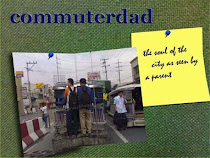
What do you do when caught in a traffic jam?
Trying not to inhale too much of vehicle fumes.
Well, that’s one, but in Metro Manila you simply can’t help admiring the art work on the sides of the jeepneys.
When I was still in grade school I remember jeepney decorations on the hood with miniature airplanes and horses.
It was almost the same for all jeepneys at that time.
Until the Patok jeeps emerged.

The Patok was noticed in the 1980s mostly plying the Rizal routes.
They are notorious for booming music and fast, almost reckless driving.
They also brought into prominence their distinctive body art works.
While many jeepneys had their birth places in Malabon, Cavite, and San Pablo, these jeepneys came to maturity as the Patok, becoming a jazzed up, spruced up handsome jeepney that many passengers prefer.


Jeepney art work started out as decals, stickers with pre-printed slogans and drawings.
It soon became customized as ingenious artists produced artworks from cut-out vinyl stickers and combined together to form a unique sticker.
Many of these early art stickers were made to depict sceneries and icons.
Hand painted art work were also present, and its quality mostly depended on the artist.
But when the airbrush came, quality as well as creativity came to play a big role.
Paint brush images are now common nowadays.
Some jeepneys would have images of wives or children on the driver’s door panel.
On the side is where the artwork becomes cool and sometimes nasty.
Art styles also became wild, ranging up to surrealism to depict fantasies of beautiful women and futuristic hedonism.
The jeepney artworks will continue to be a regular attribute of the public conveyance vehicle, and may be its redeeming feature.
With the continuing high prices of fuel (these jeepneys run on diesel, btw), people will not have second thoughts about using the jeepney.
 What do you do when caught in a traffic jam? Trying not to inhale too much of vehicle fumes. Well, that’s one, but in Metro Manila you simply can’t help admiring the art work on the sides of the jeepneys. When I was still in grade school I remember jeepney decorations on the hood with miniature airplanes and horses. It was almost the same for all jeepneys at that time. Until the Patok jeeps emerged.
What do you do when caught in a traffic jam? Trying not to inhale too much of vehicle fumes. Well, that’s one, but in Metro Manila you simply can’t help admiring the art work on the sides of the jeepneys. When I was still in grade school I remember jeepney decorations on the hood with miniature airplanes and horses. It was almost the same for all jeepneys at that time. Until the Patok jeeps emerged.










No comments:
Post a Comment